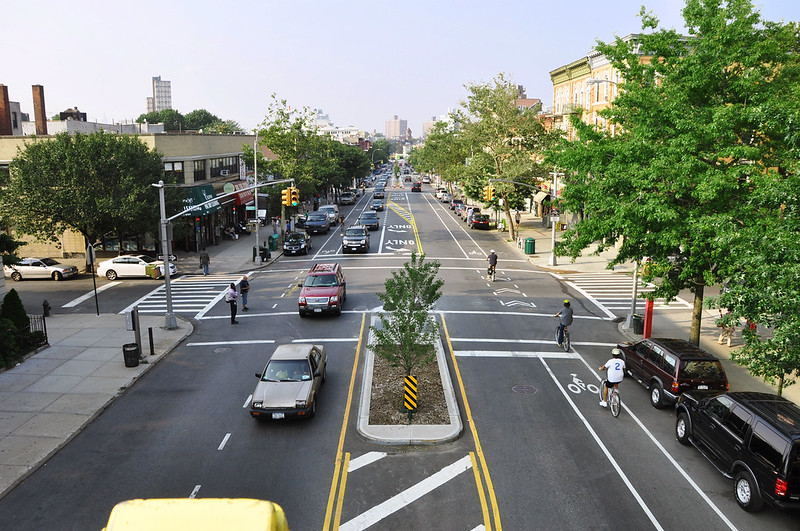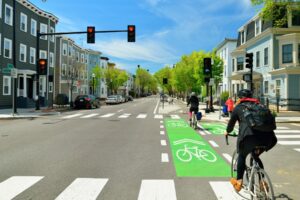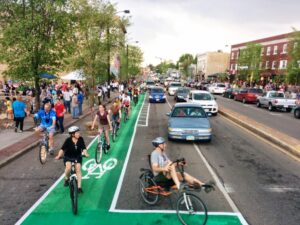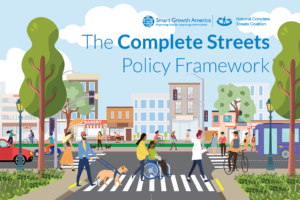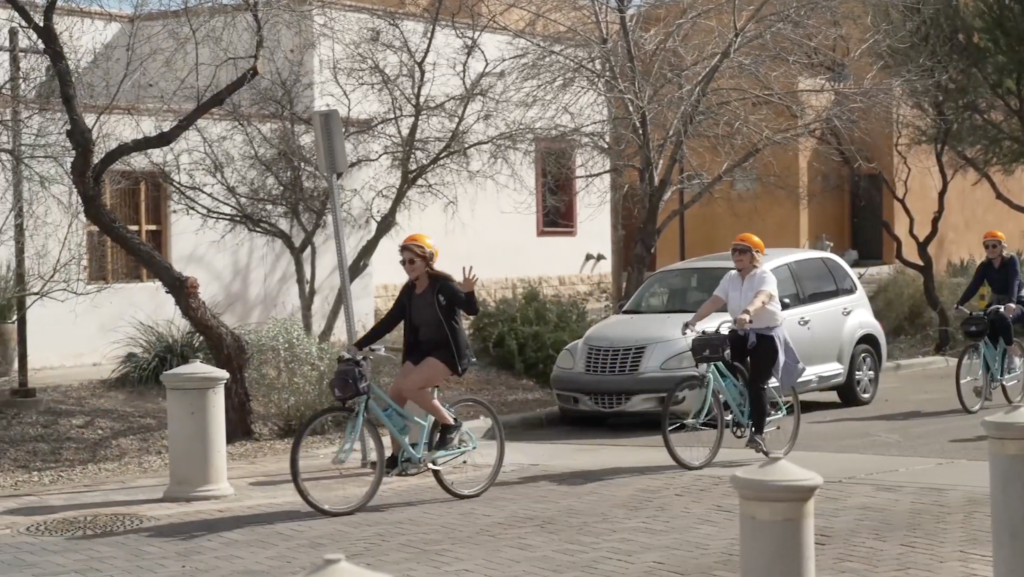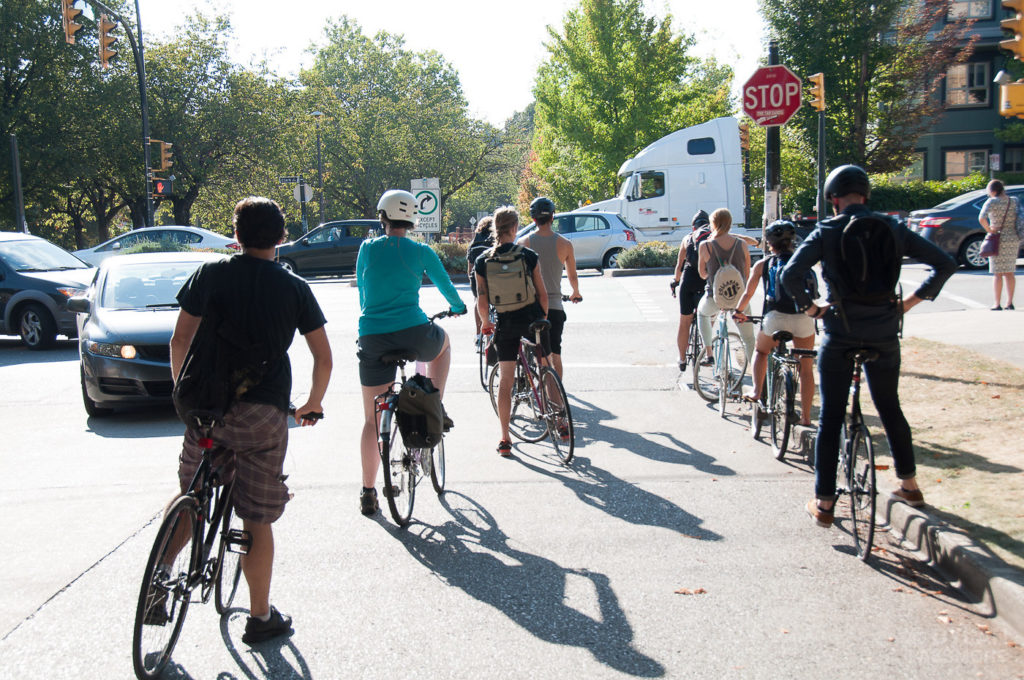
Though it’s an uphill battle, national efforts to prioritize safety over speed really can gain momentum and achieve results. The Complete Streets movement is one such example.

The term Complete Streets refers to an approach to planning, designing and building streets that enables safe access for all users, including pedestrians, bicyclists, motorists and transit riders of all ages and abilities. While every complete street is unique depending on a community’s local context, these streets ultimately support a variety of transportation options and enhance the quality of life for residents by promoting safety, accessibility, and sustainability.
While it wasn’t always this way, an overemphasis on vehicle travel at the expense of all other modes of transportation has resulted in incomplete streets being the default approach to transportation in the U.S. It’s our hope that decision-makers at every level will change that by prioritizing safety over speed.
The early days
The term “Complete Streets” was first coined in 2003 by Barbara McCann, who now serves as the Senior Advisor to the Associate Administrator for Safety at the Federal Highway Administration. Two years later, she helped form the National Complete Streets Coalition, now a program of Smart Growth America. This coalition has played a crucial role in advocating for Complete Streets policies and practices over the last 20 years.
One of the landmark moments in the movement’s history occurred in 2009 when the National Complete Streets Coalition released its first Complete Streets Policy Guide. This guide provided a comprehensive framework for communities to develop their own Complete Streets policies. An updated policy framework, released last year, which serves as a national model of best practices to create a policy at any level of government. Click here to see the updated framework.
Successes and ongoing challenges
The impact of Complete Streets policies can be seen in numerous cities across the United States. For example, the city of Portland, Oregon, is renowned for its successful implementation of Complete Streets principles. Portland’s emphasis on cycling infrastructure, pedestrian-friendly design, and transit options has contributed to its reputation as a model for sustainable urban transportation.
Similarly, New York City’s implementation of Complete Streets features, such as protected bike lanes and pedestrian plazas, has transformed its streetscape, making it safer and more accessible for residents and visitors alike. These examples underscore the potential of Complete Streets to create more vibrant, equitable, and sustainable urban environments.
Despite the successes, the Complete Streets movement faces several challenges. Implementing these principles often requires overcoming entrenched interests and overcoming budgetary constraints. Additionally, achieving broad public support and ensuring that all community members benefit from Complete Streets projects can be complex. The number of people hit and killed while walking continues to rise across the country, reflecting the need for decision makers at every level to prioritize safety over speed. Click here for the National Complete Streets Coalition’s reflections on the path ahead.
The Complete Streets movement reflects a growing recognition of the need for transportation systems that serve all members of society, and change is far from over. Over the past 20 years, the concept has evolved from a visionary idea to a widely accepted approach that is reshaping the way we think about and design our roadways. As cities continue to embrace Complete Streets principles, they pave the way for more equitable, sustainable, and livable communities, setting a new standard for how we envision and experience our public spaces.




